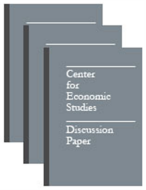The Structure Of Technology, Substitution, And Productivity In The Interstate Natural Gas Transmission Industry Under The NGPA Of 1978
The Structure Of Technology, Substitution, And Productivity In The Interstate Natural Gas Transmission Industry Under The NGPA Of 1978
Abstract
The structure of production in the natural gas transmission industry is estimated using the dual restricted cost function based on panel data for twenty four firms. A standard translog variable cost function with firm fixed effects is augmented with controls for capacity utilization, technical change, and shifting regulatory regimes. During the implementation of the Natural Gas Policy Act (NGPA), 1978-1985, the industry exhibited no significant increase in productivity, largely attributable to the decline in output for the industry. Regulatory efforts to promote voluntary non-contract transmission appear to have enabled some firms to mitigate the overall industry productivity stagnation. The NGPA instituted a complex schedule of partial and gradual decontrol of natural gas prices at the well head. This form of deregulation costs natural gas producers over $100 billion in lost revenues, relative to immediate and full price deregulation. However, the transmission firms benefited by paying $1.5 billion less for natural gas than they would have under total deregulation. The benefits to consumers, totaling $98.7 billion, were unevenly distributed. On average, for the 1978-1985 period, utilities, commercial, and industrial users paid less for their gas than they would have under total decontrol and residential users paid $8.6 billion more. The NGPA and Federal Regulatory Commission oversight practices allow the transmission industry to price discriminate among customers.




